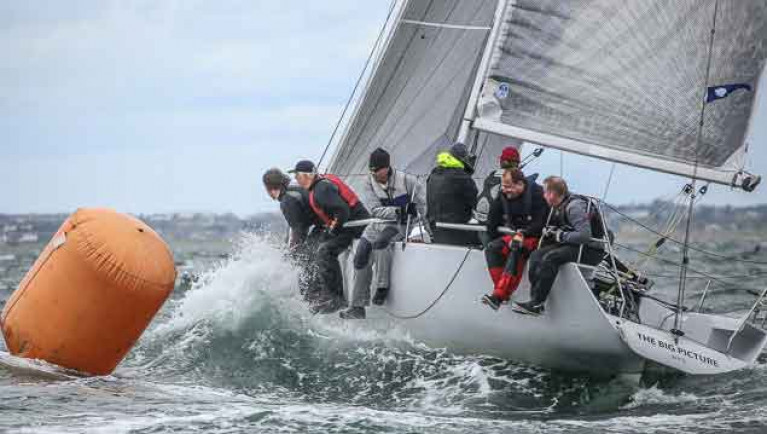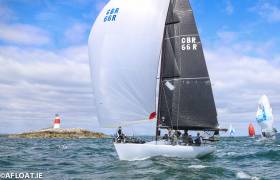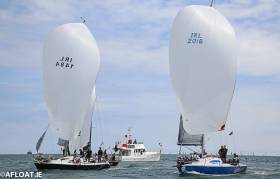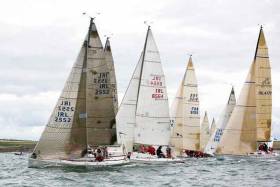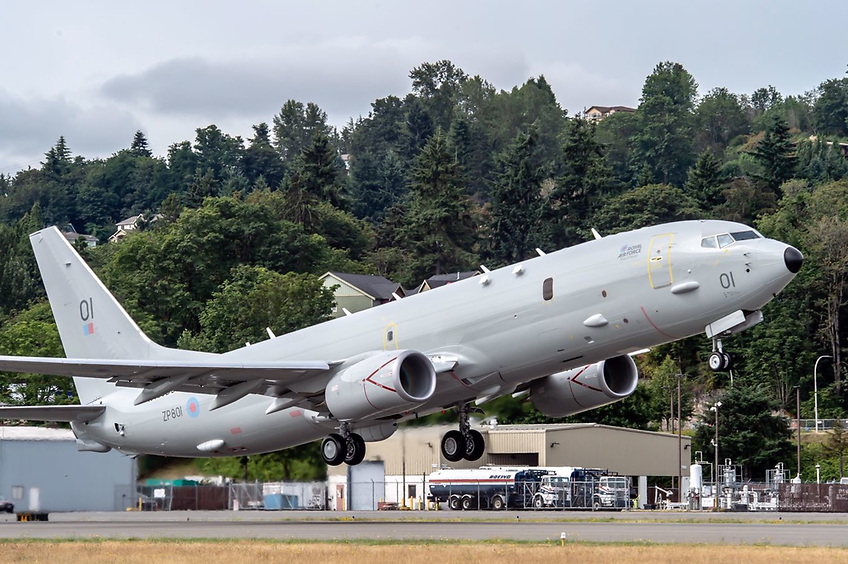Displaying items by tag: Half tonner
Royal Cork Half Tonner Swuzzlebubble: From a Wreck in Greece to Irish Boat of the Year with Young Sailors
Dave Dwyer’s success with Swuzzlebubble comes from a determination to acquire the classic Farr-designed half-tonner, which had been a wreck in Greece.
He comes from a Cork family that has a four-generation sailing history.
 Dave Dwyer’s Half Tonner Swuzzlebubble competing at Kinsale Yacht Club's Sovereign's Cup Photo: Bob Bateman
Dave Dwyer’s Half Tonner Swuzzlebubble competing at Kinsale Yacht Club's Sovereign's Cup Photo: Bob Bateman
Winning the Irish Cruiser Racing Association ‘Boat of the Year’ crowns a highly successful sailing season for the yacht, its owner and the crew, in which he particularly included young sailors.
In my interview with him for this week’s Podcast, he tells the story of how he acquired Swuzzlebubble, about the preparation for its racing campaign, emphasises the importance of preserving this sector of sailing and outlines his belief in encouraging youth involvement in cruiser racing.
 Dave and James Dwyer (pictured centre) with the Swuzzlebubble crew at Kinsale Yacht Club after winning the Sovereign's Cup 2023 in June Photo: Bob Bateman
Dave and James Dwyer (pictured centre) with the Swuzzlebubble crew at Kinsale Yacht Club after winning the Sovereign's Cup 2023 in June Photo: Bob Bateman
I started the interview by asking how he had acquired Swuzzlebubble.
Listen to the Podcast below
Boats may be inanimate objects, but those who sail them seldom see them that way. The classic Half Tonner Swuzzlebubble certainly arouses special emotions, for there are senior sailors in Ireland who sailed her to success as ISORA Champion in 1980, when she was owned by the late Bruce Lyster of Dun Laoghaire’s Royal St George YC.
Forty-three years ago, she was quite a basic boat. But now, after surviving many vicissitudes and at least one unsuccessful attempt to get her to a landfill site, she is back in Ireland in a superbly re-furbished style, and her proud owners are James and David Dwyer of the Royal Cork Yacht Club.
Almost from the moment the first races started in the Simply Blue Sovereign’s Cup 2023 in Kinsale, it was clear that Swuzzlebubble and her crew were on a roll, and they took the title with a clean sweep of six wins, getting our Inshore Sailors of the Month for June title with it.
 Probably the coolest boat in Ireland – Swuzzlebubble making windward work in an Atlantic chop look easy at Kinsale. Photo: Robert Bateman
Probably the coolest boat in Ireland – Swuzzlebubble making windward work in an Atlantic chop look easy at Kinsale. Photo: Robert Bateman
Half Tonner Checkmate XV is for Sale
Probably the best looking and most successful Half Tonner ever is on the market via Afloat boats for sale as the Howth Yacht Club based Checkmate XV goes on sale for €46k.
"No expense has been spared on this incredible race machine that is faster now than ever", according to her owner Dave Cullen.
With a full IRC refit by Corby Yachts in 2014, the current Half Ton Class European Champion comes complete with a Mills design keel and a Corby designed rudder, the hull also has a fully faired hull, keel and rudder.
AwlGrip hull and deck paint. Nautics antifouling. Deck resprayed 2020. Seadek cockpit floor. Full Harken winch and deckware package.
The boat is the winner of every major regatta in Ireland including WAVE (overall regatta winner), Volvo Dun Laoghaire Regatta and the ICRAs. Read the full advert here.
Biggs' Howth Half Tonner 'Checkmate XVIII' Sails to ICRA Championship Success on Dublin Bay
In the end, it became a Half Tonner domination of Class Two of the ICRA Championships on Dublin Bay this weekend, where light to medium conditions played right into the hands of the optimised vintage yachts.
All three podium places went to the Howth class with, as predicted, Nigel Biggs' Checkmate XVIII taking the title on nine points with a four-point margin over Jonny Swan in King One.
Biggs' winning crew were Dave Cullen, Daragh Sheridan, Suzie Murphy, Andy Sargent, Mark Kenny and Niki Potterton.
Third was HYC clubmate Darren Wright in Mata.
The north Dublin club took ten of the top 12 places in the 15-boat fleet, with 2019's overall ICRA winner, the X-332 Dux (Anthony Gore Grimes), finishing fourth.
Results are here
 Second in IRC2 - Jonny Swan at the helm of King One
Second in IRC2 - Jonny Swan at the helm of King One
 Third in IRC2 - Darren Wright's Mata
Third in IRC2 - Darren Wright's Mata
 The X-332 Dux (Anthony Gore Grimes) finished fourth
The X-332 Dux (Anthony Gore Grimes) finished fourth
At least six Half Tonners and six X302s are expected for a newly devised Championships at Howth Yacht Club later this month.
The Irish Half Ton Cup and X302 Challenge will be sailed over three windward-leeward courses and a coastal race from August 21 & 22nd.
With July's Volvo Dun Laoghaire Regatta cancelled and leaving a void in the season, the two classes came together to produce the pop-up event.
The championships will also serve as a warm-up for September's ICRA National Championships at the National Yacht Club.
Under 18 sailors
The Half-Ton Class says it is keen to promote junior sailing and so have agreed that each boat will take an under 18 sailor as part of the crew for the event. Event rules will permit IRC crew number plus one to encourage same.
The Notice of Race and the Sailing Instructions are downloadable below. Online entry is here.
Price Drop on Howth Half Tonner
The Howth Yacht Club Half Tonner 'The Big Picture' that is currently on the market has had a price drop from €55,000 to €48,000 as the 2021 sailing season kicks off.
Skipper Michael Evans says he is selling due to the purchase of a larger yacht.
As Afloat reported previously, the immaculate MG HS30 MOD yacht has been stored indoors, well maintained, and as regular Afloat readers know has been raced locally in Howth and at regattas across Ireland.
Modifications of the Half Tonner include an extended keel to provide additional righting moment and upwind performance, a widened cockpit and a carbon bowsprit for a Code Zero.
The yacht features a large sail inventory, including some with brand new sails.
Read the full The Big Picture advert here
Howth Half Tonner 'Big Picture' is for Sale
The Howth Yacht Club Half Tonner 'The Big Picture' is for sale at €55,000.
The MG HS30 MOD yacht has been stored indoors, well maintained, and as regular Afloat readers know has been raced locally in Howth and at regattas across Ireland.
Skipper Michael Evans says he is selling due to the purchase of a larger yacht.
The yacht features a large sail inventory, including some with brand new sails.
Modifications of the Half Tonner include an extended keel to provide additional righting moment and upwind performance, a widened cockpit and a carbon bowsprit for a Code Zero.
Read the full The Big Picture advert here
If sailing is a waterborne game of chess, then Nigel Biggs’ Half Tonner Checkmate XVIII is fulfilling the promise of her name with the bullet today in Volvo Dun Laoghaire Regatta to have her on 6 points after discarding a 4th, making the Mancunian - who lists his clubs as RIYC and Howth -clear ahead by ten points of Royal Cork’s Ronan and John Downing with Miss Whiplash, while Dave Cullen (HYC) has moved into third overall after finishing with a second today on Checkmate XV.
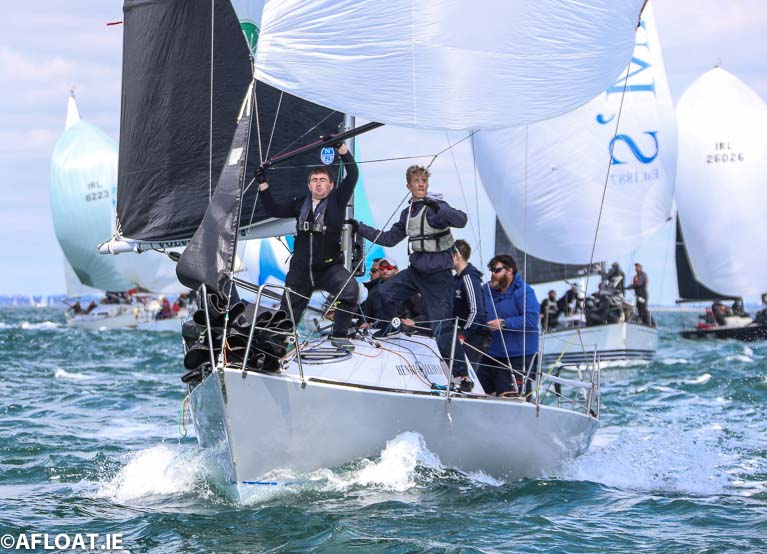 Royal Cork's Miss Whiplash (Ronan Downing) is second
Royal Cork's Miss Whiplash (Ronan Downing) is second
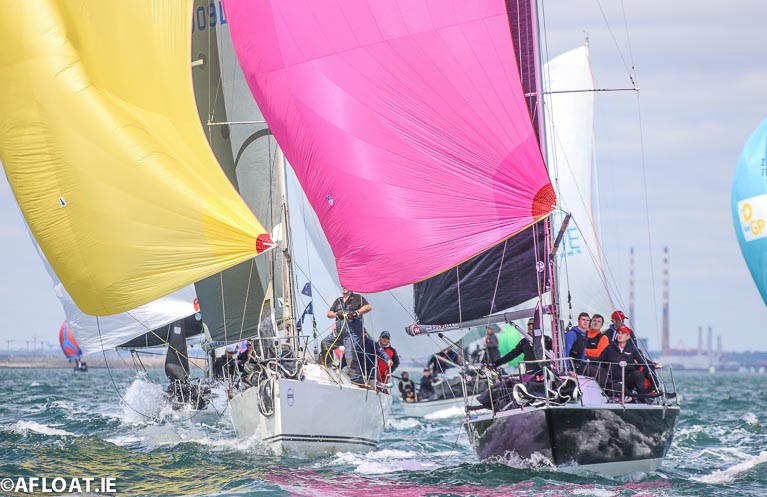 Tricky spinnaker work in relatively big seas and a tightly bunched fleet off the Muglins Rock on Dublin Bay
Tricky spinnaker work in relatively big seas and a tightly bunched fleet off the Muglins Rock on Dublin Bay
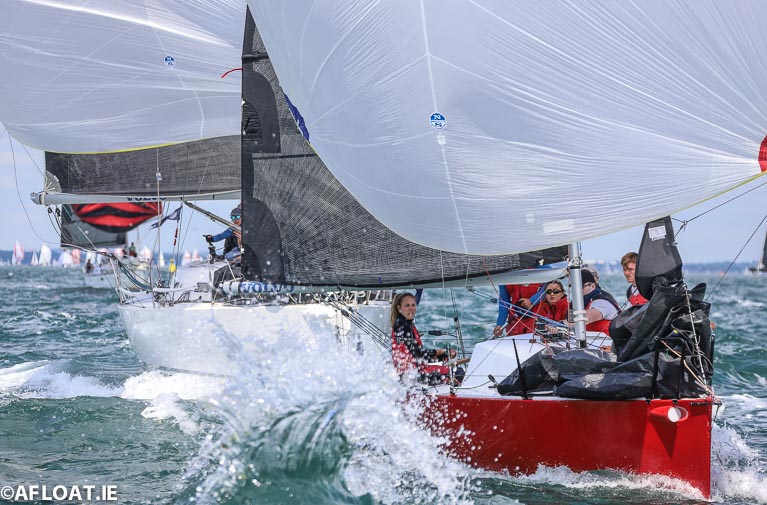 Royal Cork's Antix Beag (Anthony O'Leary)
Royal Cork's Antix Beag (Anthony O'Leary)
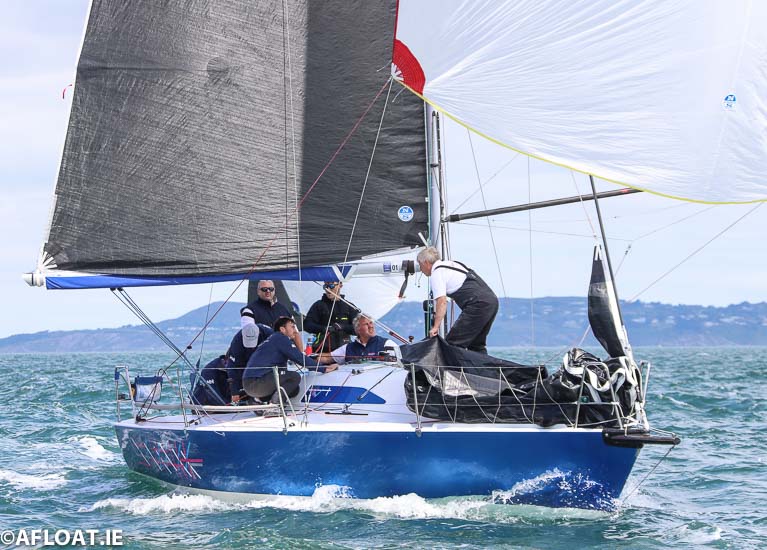 Dave Cullen (HYC) has moved into third overall after finishing with a second today on Checkmate XV
Dave Cullen (HYC) has moved into third overall after finishing with a second today on Checkmate XV
Dave Cullen on where the growing vintage Irish Half Tonner fleet is racing this year
Last year it was decided in Nieuwpoort to revert to a biennial format for the Half Ton Classic Cup so there is no event this year. Instead, RORC will host next year’s event in Cowes and are resurrecting the original “Half Ton Cup” to present.
Locally, this means we are roaming Ireland instead with the active fleet which now comprises Checkmate XV, Harmony, King One, Miss Whiplash, Checkmate XVIII, The Big Picture, Cortegada and Mata (formerly Trastada) all lining up for ICRAs, Dun Laoghaire Week and Sovereigns Cup. We have also resurrected the Irish Half Ton Cup presented by Sean Flood and Chubb in 1988 and this will be competed for as part of Sovereigns Cup.
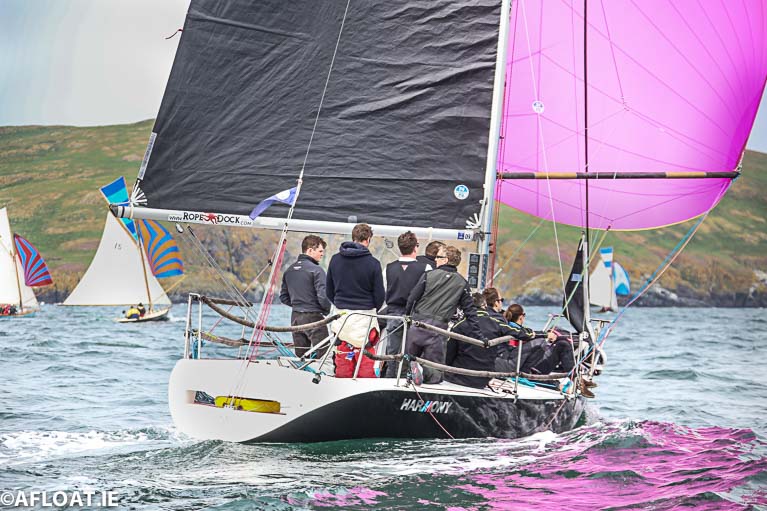 Harmony
Harmony
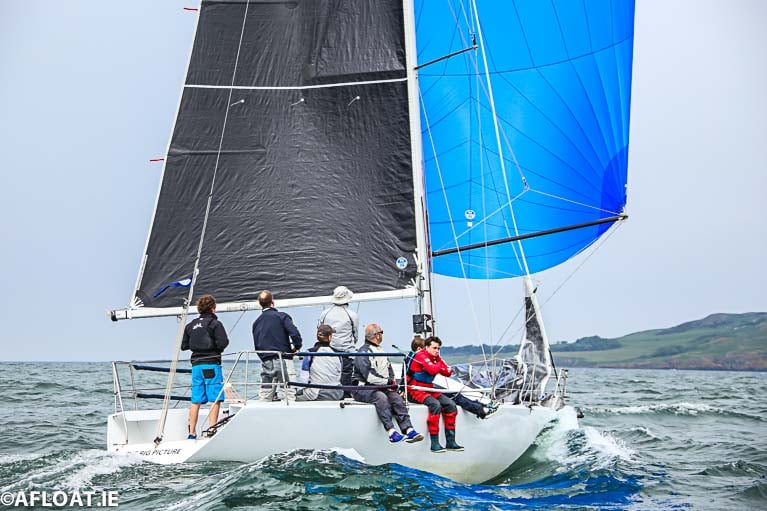 The Big Picture
The Big Picture
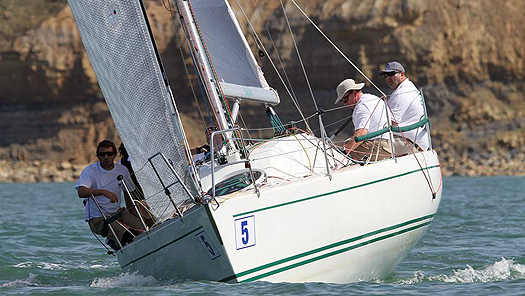 King One
King One
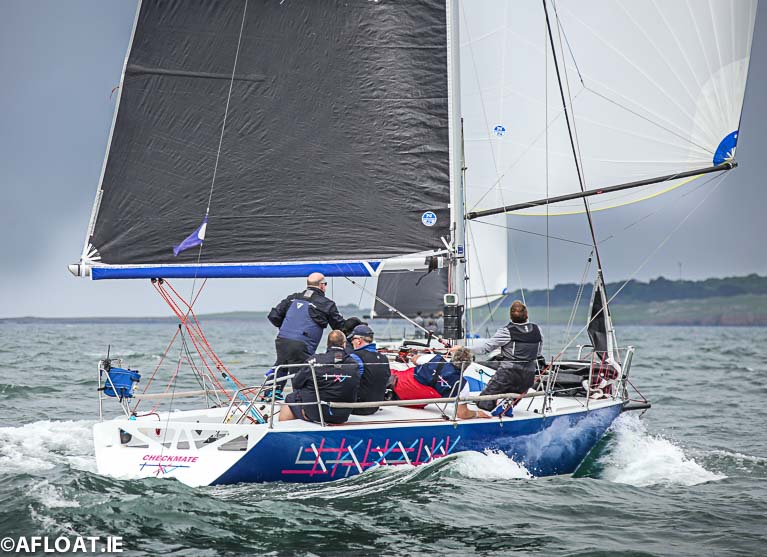 Checkmate XV
Checkmate XV
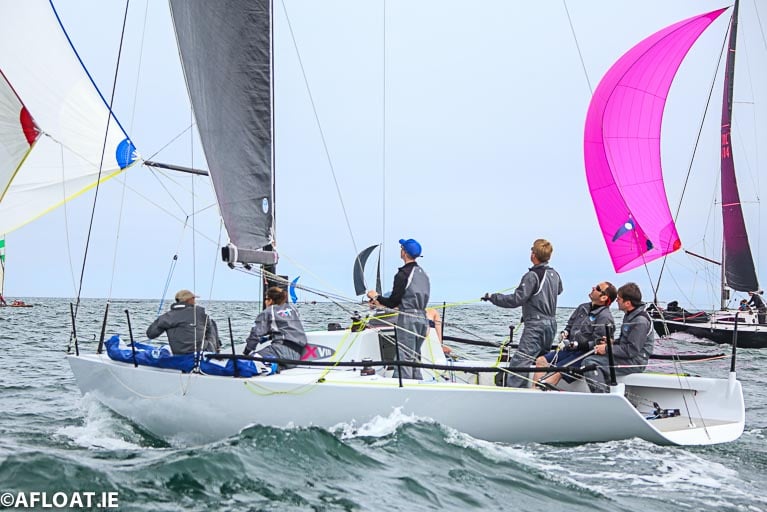 Checkmate XVIII
Checkmate XVIII
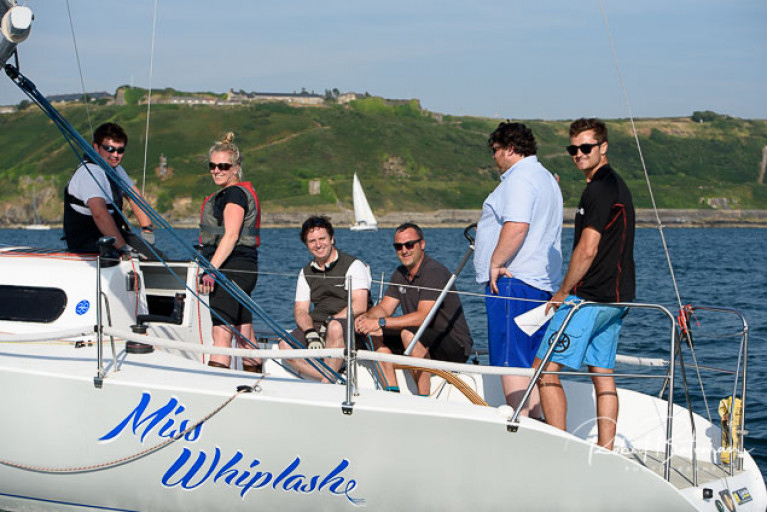 Miss Whiplash Photo: Bob Bateman
Miss Whiplash Photo: Bob Bateman
"We have also resurrected the Irish Half Ton Cup"
The two Checkmates are also heading to Pwllheli in August for the Welsh IRC Championships.
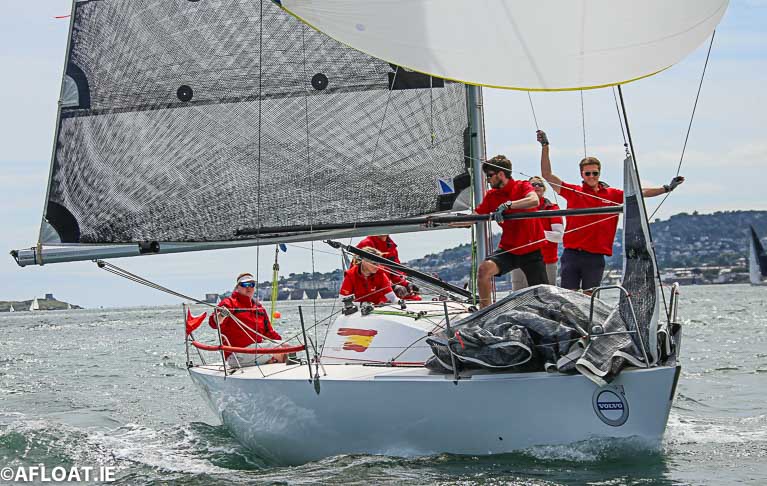 Mata formerly Trastada Photo: Afloat.ie
Mata formerly Trastada Photo: Afloat.ie
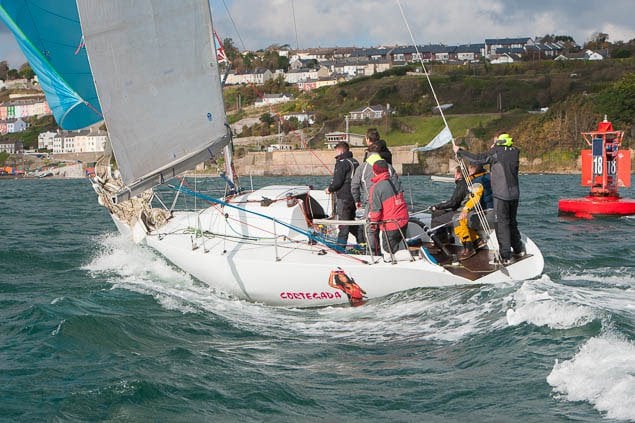 Cortegada Photo: Bob Bateman
Cortegada Photo: Bob Bateman
For a bit of fun, I have chartered Gunboat Rangiriri to compete in the Italian Half Ton Cup in May in Fiumicino, Rome. Gunboat is in original configuration as are all the local boats with a fractional rig with runners and original centreboard!
Half–Tonners, Sigma 33s, X302s, J97s & Corbys Mean ICRA Class Two Title Is Wide Open
Class Two is certainly heating up and expanding this year writes Dave Cullen, Skipper of championship winning half–tonner Checkmate XV. The quality of the fleet must make it one of the most competitive with boats ranging from €15k to €150k all in with a fighting chance of the podium.
At the bottom of the rating band, Sigma 33s make up the numbers and the top end is dominated by J97s and Elan 333s.
Such are the numbers that a number of boats might find themselves unhappy participants in Class One which happened in Sovereigns Cup two years ago.
The fleet is diverse and includes a sizeable X302 fleet from Howth YC including the stalwart podium winner DUX, Maximus and Viking to name but a few.
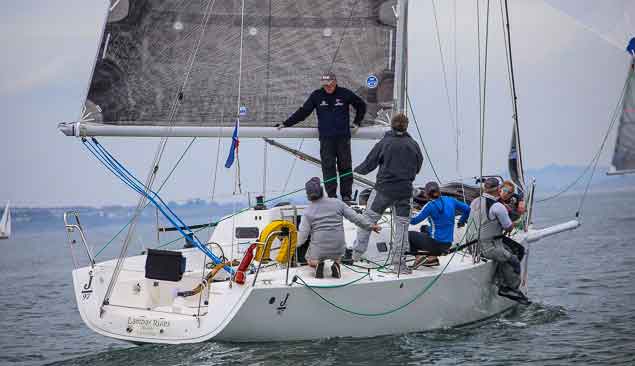 Stephen Quinn’s J/97 Lambay Rules is at the top of the Class Two Rating Band Photo: Afloat.ie
Stephen Quinn’s J/97 Lambay Rules is at the top of the Class Two Rating Band Photo: Afloat.ie
 Cork's George Radley adds his latest 'half' Half Tonner Cortegada to the Class Two fleet this season. Photo: Bob Bateman
Cork's George Radley adds his latest 'half' Half Tonner Cortegada to the Class Two fleet this season. Photo: Bob Bateman
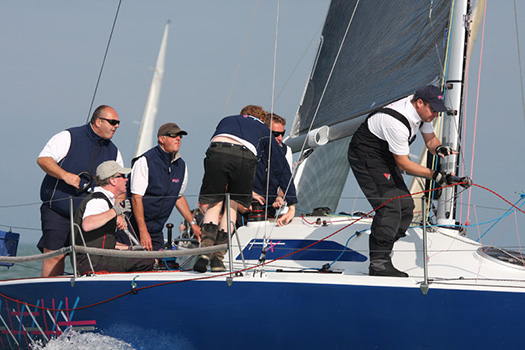 David Cullen's Checkmate from Howth Yacht Club is the 2015 Half Ton champion
David Cullen's Checkmate from Howth Yacht Club is the 2015 Half Ton champion
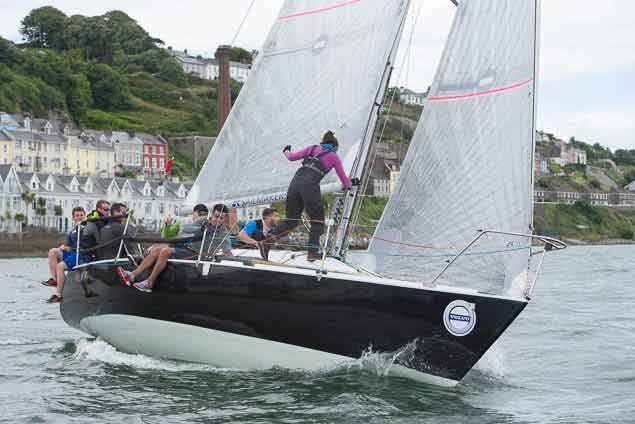 Popular Half tonner Harmony from Howth (Jonny Swan) is on the Class Two circuit Photo: Bob Bateman
Popular Half tonner Harmony from Howth (Jonny Swan) is on the Class Two circuit Photo: Bob Bateman
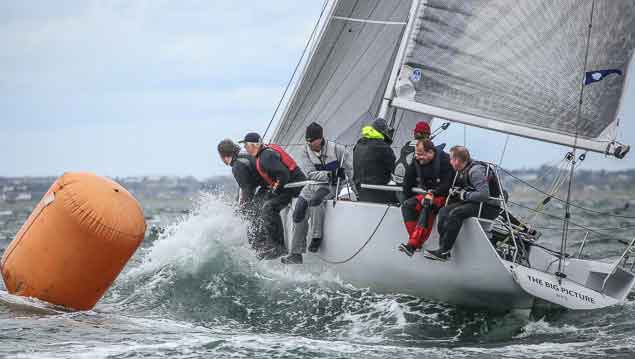 Another quality Half tonner campaign from HYC, The Big Picture (Michael and Richard Evans). Photo: Afloat.ie
Another quality Half tonner campaign from HYC, The Big Picture (Michael and Richard Evans). Photo: Afloat.ie
The Half Ton class is formidable and apart from the locals of Checkmate XV, Harmony, King One and The Big Picture, visiting boats planning on basing campaigns here include Nigel Biggs latest Checkmate XVIII ex Dick Dastardly, Paul Wayte from Swansea's HB31 Headhunter and the highly optimised Miss Whiplash returns to Dublin owned by Paul Pullen visiting from Swansea. Demolition from Falmouth is also likely to appear. George Radley adds his latest 'half' Cortegada to the pile of quality competitors.
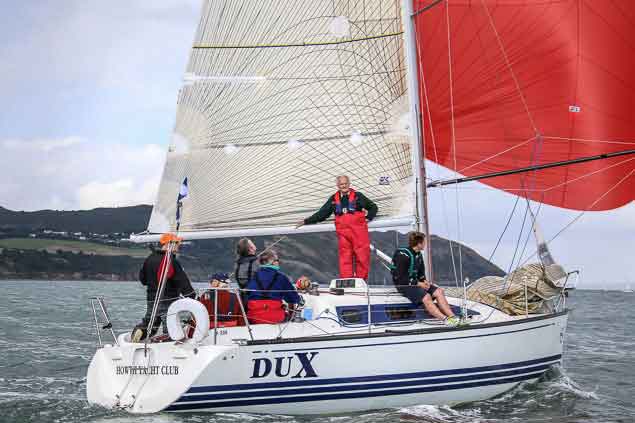 The X302 fleet from Howth YC includes stalwart DUX Photo: Afloat.ie
The X302 fleet from Howth YC includes stalwart DUX Photo: Afloat.ie
Throw in DB1s, J80s, Corby 25 & 26s and the start line really shapes up with a sharp competitive fleet.
It's easy to predict the half tonners as dominating with light to medium conditions suit them for sure. The same applies with the Corbys. Throw in an extra few knots and the X302s pick up their heels as do the Sigma 33s which are never too far behind. Movistar Blue and Lambay Rules like a breeze too so the field is really wide open.
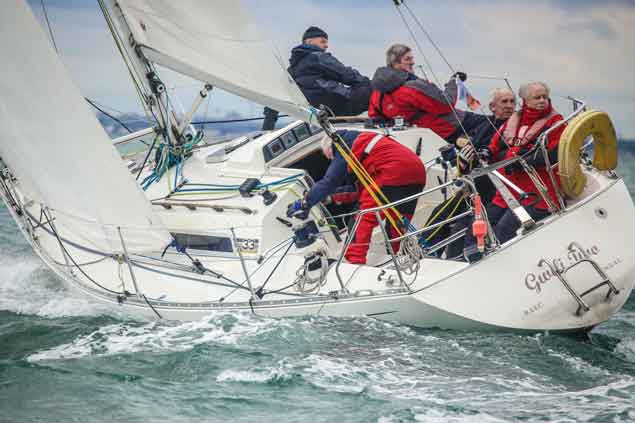 The Sigma 33 class, formerly a stand alone one design class, have joined DBSC Cruisers Two division this year, boosting numbers on Dublin Bay to 19 Photo: Afloat.ie
The Sigma 33 class, formerly a stand alone one design class, have joined DBSC Cruisers Two division this year, boosting numbers on Dublin Bay to 19 Photo: Afloat.ie
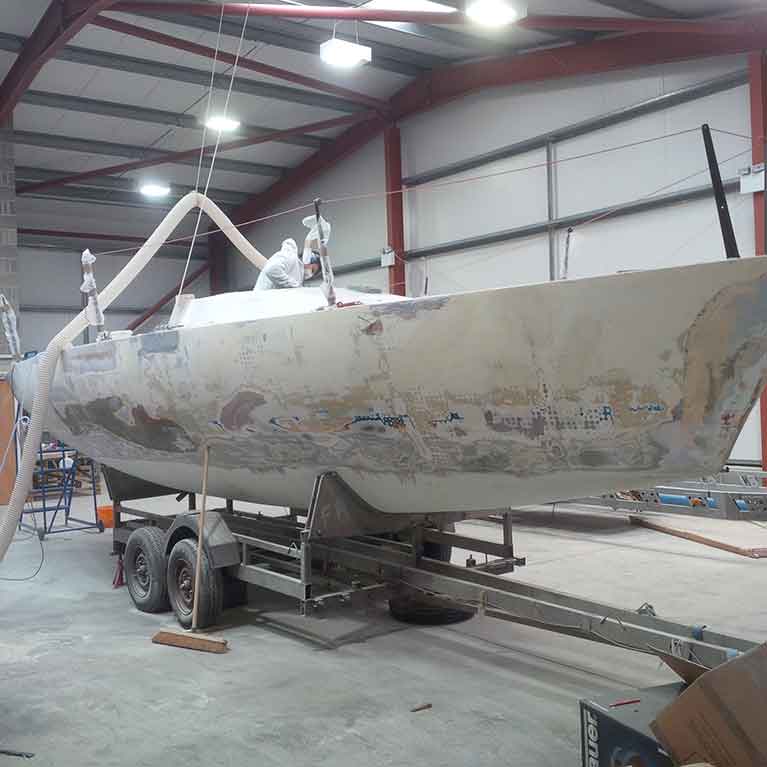 Checkmate XVIII – the old Emiliano Zapata, ex Dick Dastardly, ex French Beret, ex Concorde from 1985 is undergoing a refit in North Wales, launching early May
Checkmate XVIII – the old Emiliano Zapata, ex Dick Dastardly, ex French Beret, ex Concorde from 1985 is undergoing a refit in North Wales, launching early May
On Dublin Bay, there will be a reported 19 boats in this year's DBSC Cruisers two fleet boosted by eight Sigma 33s who join the division.
As to predictions, any of the boats in the class can win but need to arrive on the line in good shape and well prepared. Rub your hand over the bum of any of the Class leaders and you will see the efforts put in as the best winning ingredient for race wins is boat speed.
I think a prediction is futile without a weather forecast so I would say for lighter traditional Dublin summer conditions, any of the half tonners or the Corby 25 will feature in a windward–leeward race, Lambay Rules (J97) prefers a reach round the cans races whilst a well sailed Sigma 33 has a real chance if they can stop the mighty Dux in breezy conditions.
Having answered the question like a politician would, if it was predictable none of us would bother, so place your bets and see how it fared out in October. I'll put a tenner on Biggsy though!
Dave Cullen of Howth Yacht Club is Skipper of Half–Tonner Checkmate XV and won the 2015 Half Ton Classics Cup with a race to spare


























